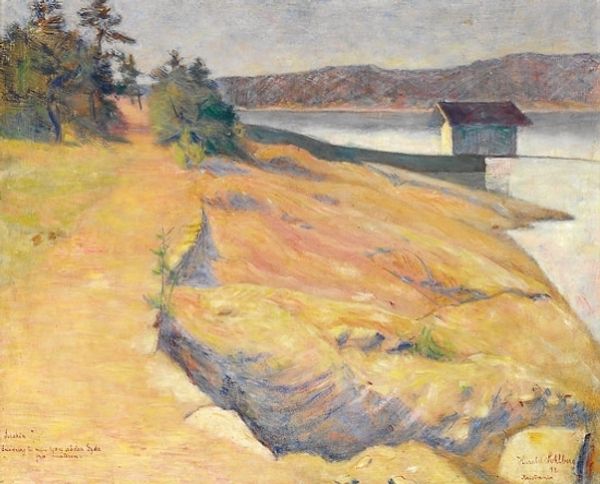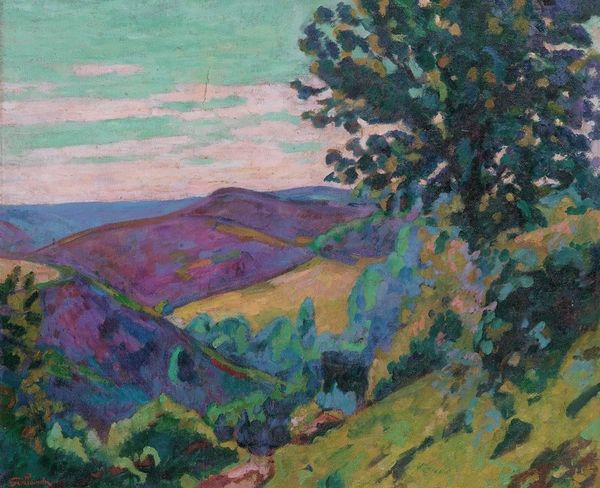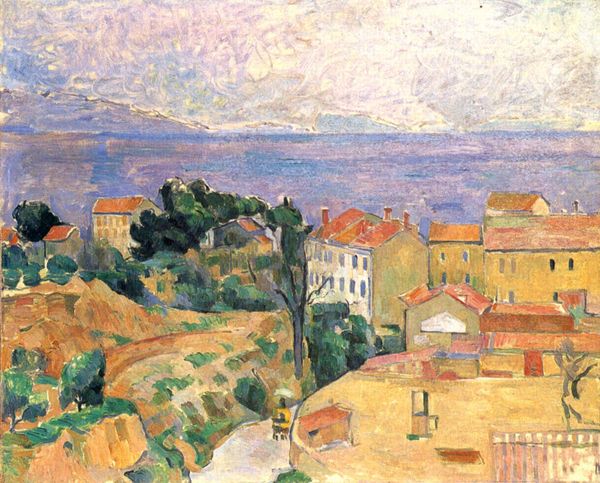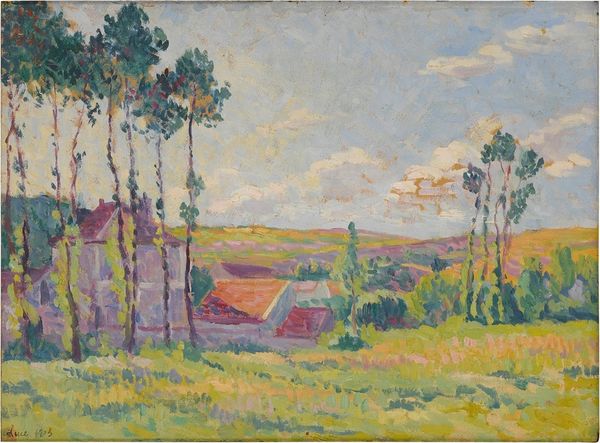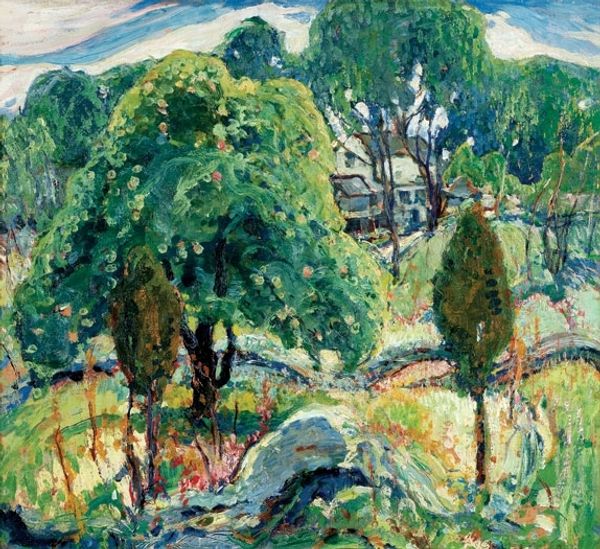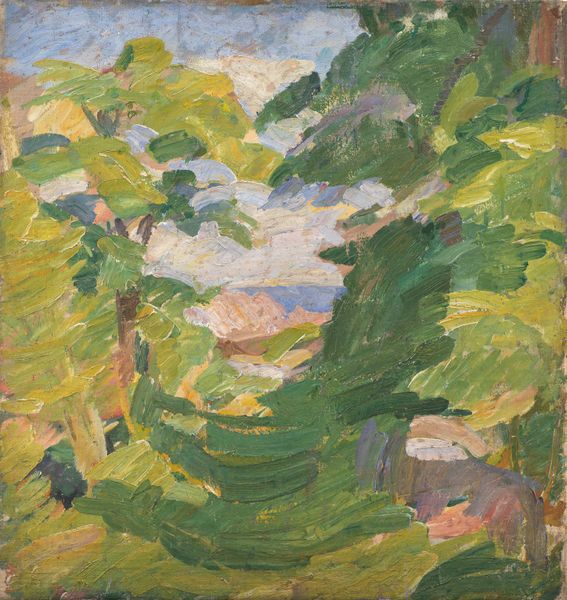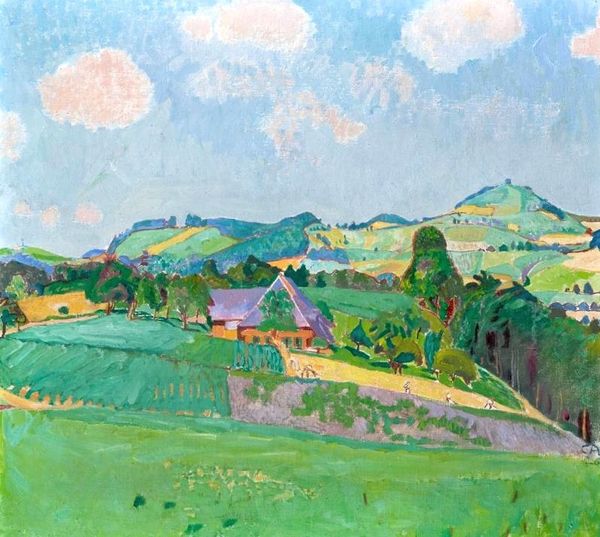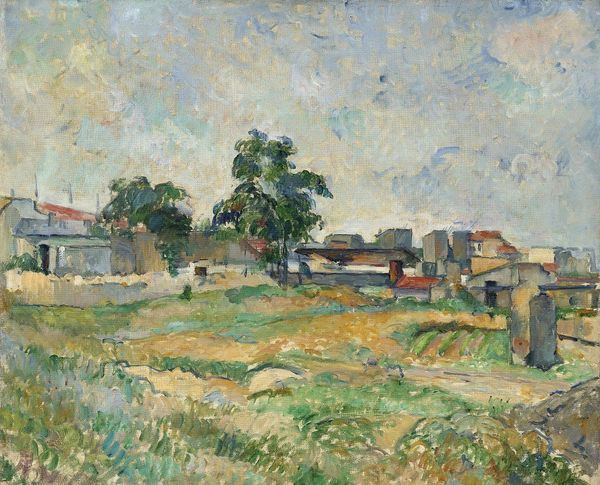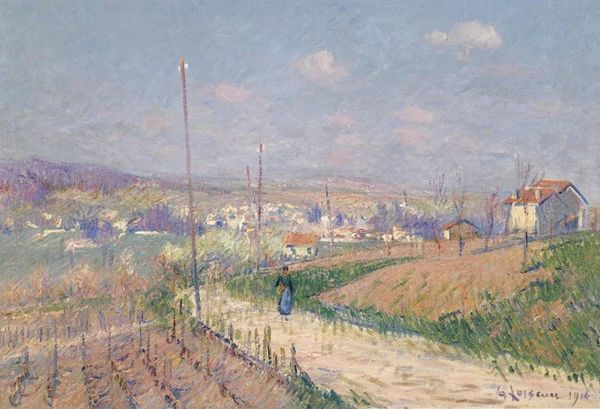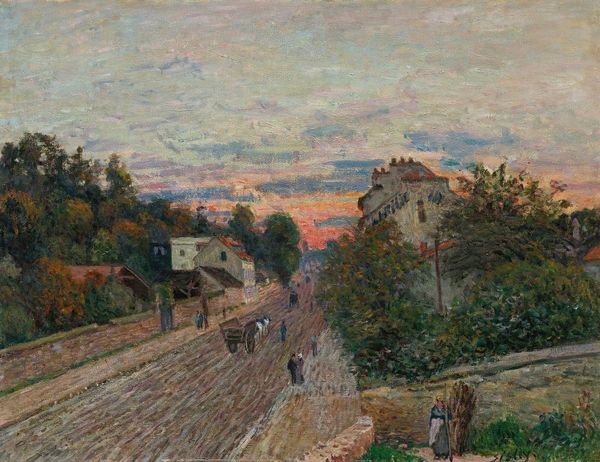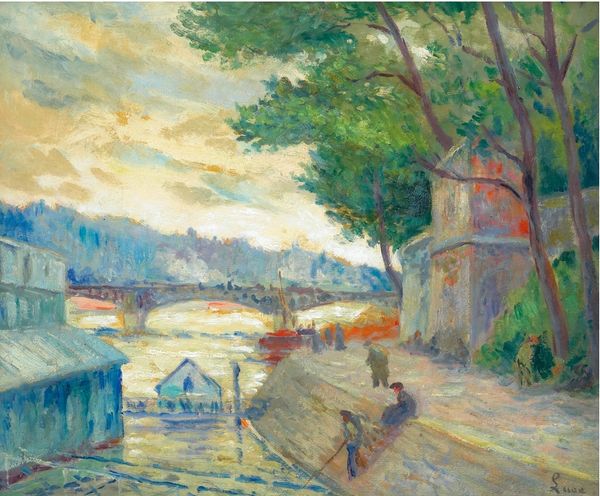
Copyright: Public Domain: Artvee
Editor: So, here we have Carl Moll’s "Beim Eichelhof in Nussdorf," painted in 1933. The texture really grabs me; it looks like thick strokes of oil paint applied almost sculpturally. It’s so tactile. What strikes you most about it? Curator: The materiality is definitely key. Notice how the impasto technique isn't just aesthetic; it speaks to the labor involved in its creation. This wasn’t mass-produced; it's about the direct engagement of the artist with his materials, wrestling with the paint itself to create this image. The landscape isn't just represented, it’s built. What kind of relationship do you think Moll had to the landscape, considering the location? Editor: That's interesting... maybe it shows an ownership, the way he manipulates the material to represent the scene. I mean, given that it was painted in 1933 in Nussdorf, do you think the looming pre-war political climate had any influence on his artistic decisions? Curator: Absolutely. Consider that landscape painting was often tied to notions of national identity. The intense materiality could be seen as a grounding force, a reaffirmation of connection to place during uncertain times. This isn’t just pretty scenery; it's a constructed image that's deliberately tangible. How does that change your perception of it? Editor: I see it now! It’s less of a window and more of a statement about ownership, the artist laying claim to the land, the work, and the experience of his landscape through material means, I never considered paint strokes as gestures of labor. Curator: Exactly. By focusing on the materials and process, we move beyond surface appearances and start to understand the deeper cultural and historical forces at play. Editor: This has totally changed how I see the artwork. Thanks! Curator: It was a pleasure to explore this material landscape together!
Comments
No comments
Be the first to comment and join the conversation on the ultimate creative platform.
